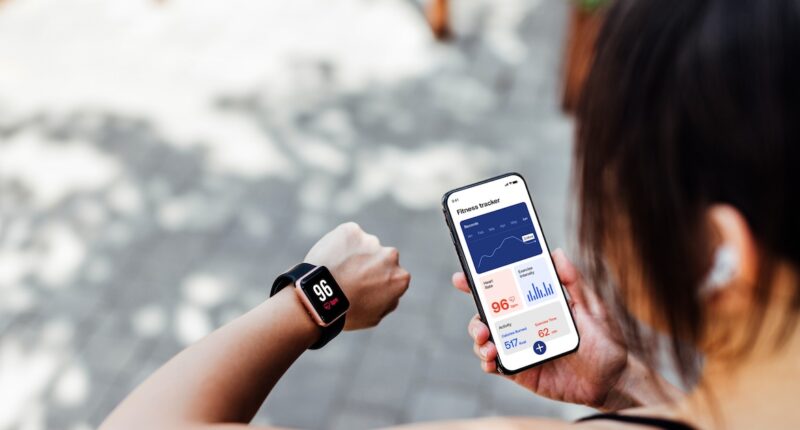According to Siddhartha Angadi, PhD, an associate professor at the University of Virginia and one of the study’s authors, exercise capacity, as measured by VO2 max, is a powerful determinant of future mortality. Angadi highlights that it is a more reliable indicator of the risk of future death than weight, based on BMI categories.
The study underscores the significance of aerobic fitness over weight concerning longevity, emphasizing the importance of cultivating a robust cardiovascular system, respiratory system, and muscle strength for long-term health.
More about the research
This research, the most comprehensive investigation to date on the relationship between body weight, fitness levels, and lifespan, analyzed data from 20 studies involving almost 400,000 participants from various countries. The participants were grouped based on their BMI (normal, overweight, or obese) as well as their aerobic fitness levels (fit or unfit).
According to Angadi, BMI is a ratio of your weight to your height that provides a rough estimate of body fat. In contrast, VO2 max measures how efficiently your body absorbs and utilizes oxygen during physical activity to quantify your level of fitness, per Harvard Health Publishing. And achieving a “fit” classification in this study didn’t require elite athleticism—anyone above the lowest 20 percent of aerobic fitness qualified as fit, says Angadi.
The review’s findings challenge the common assumption that weight is the most significant factor in health and longevity. “Unfit individuals had a two- to three-fold higher risk of all-cause mortality or cardiovascular disease mortality,” he says. “An unfit individual with a normal BMI had roughly twice the risk of mortality compared to a fit individual with an obese BMI.”
The takeaway? “The risks associated with being unfit are far greater than the risks associated with being fat,” says Angadi. “Generally, people just view exercise as a way to burn calories. But exercise is really an extraordinarily potent way to modify your risk for disease.”
The limitations of BMI as a health metric
While BMI can be a useful approximation of body fat for the general population, it can often fall short as a measure of health. “Folks have this idea that you’re fat or fit, but you can be fat and fit,” says Angadi. “Being classified as obese based on BMI depends on your height and mass. Your fitness, or VO2 max, depends on the amount of blood your heart can pump out per minute and how much oxygen your muscles can extract. Those are extraordinarily different things.”
Other experts agree that BMI has its limitations. “The problem with BMI is that it doesn’t account for muscle mass, meaning that someone can have a high amount of muscle, which is dense, and register as obese,” says Jordan D. Metzl, MD, a sports medicine doctor at the Hospital for Special Surgery. “As such, BMI is not an effective predictor of body composition or overall health.”
What’s more, “it does not tell us the location of body fat,” says Heather Milton, MS, RCEP, CSCS, a board-certified clinical exercise physiologist at NYU Langone Health. This is important because not all fat is created equal: For instance, fat that accumulates in the abdominal area is a risk factor for disease and death.
“Generally, people just view exercise as a way to burn calories. But exercise is really an extraordinarily potent way to modify your risk for disease.” —Siddhartha Angadi, PhD
Why VO2 max is a better predictor of health
Cardiovascular disease is the leading cause of death in the U.S., per the Centers for Disease Control and Prevention, so a metric that directly measures the efficiency of your heart, lungs, and muscles provides more relevant insights than BMI alone.
Put simply, when it comes to risk of dying from common chronic conditions like heart disease or diabetes, “VO2 max really gets to the heart of the matter,” says Angadi. “It gives you a really good snapshot of the organ systems that are most related to the common reasons people die. It also measures your body’s ability to extract, transport, and utilize oxygen—in other words, it’s ability to do work.”
How to boost your VO2 max
Improving your aerobic fitness starts with understanding your baseline VO2 max. Clinical metabolic testing remains the gold standard, says Metzl. This typically involves doing aerobic exercise (like jogging) while wearing a face mask that measures the amount of oxygen you inhale and the carbon dioxide you exhale, according to Milton.
You can also measure your VO2 max outside of the clinic with everyday wearables like a smart watch, says Metzl. While these tools don’t provide as precise a measurement, they still give you a rough idea of your cardiovascular fitness.
Once you know your baseline, consistent aerobic exercise is key to increasing your VO2 max. “Getting ‘fit’ is not unachievable; good health is accessible to all,” says Angadi. “Exercise is one of the best drugs you can take to modify your risk for disease—it affects every single organ system in the body.”
Angadi advises following the U.S. Department of Health and Human Services’ physical activity guidelines, which recommend that adults do at least two hours and 30 minutes of moderate-intensity aerobic activity (like brisk walking or biking) or one hour and 15 minutes of high-intensity cardio exercise (like interval training) per week.





